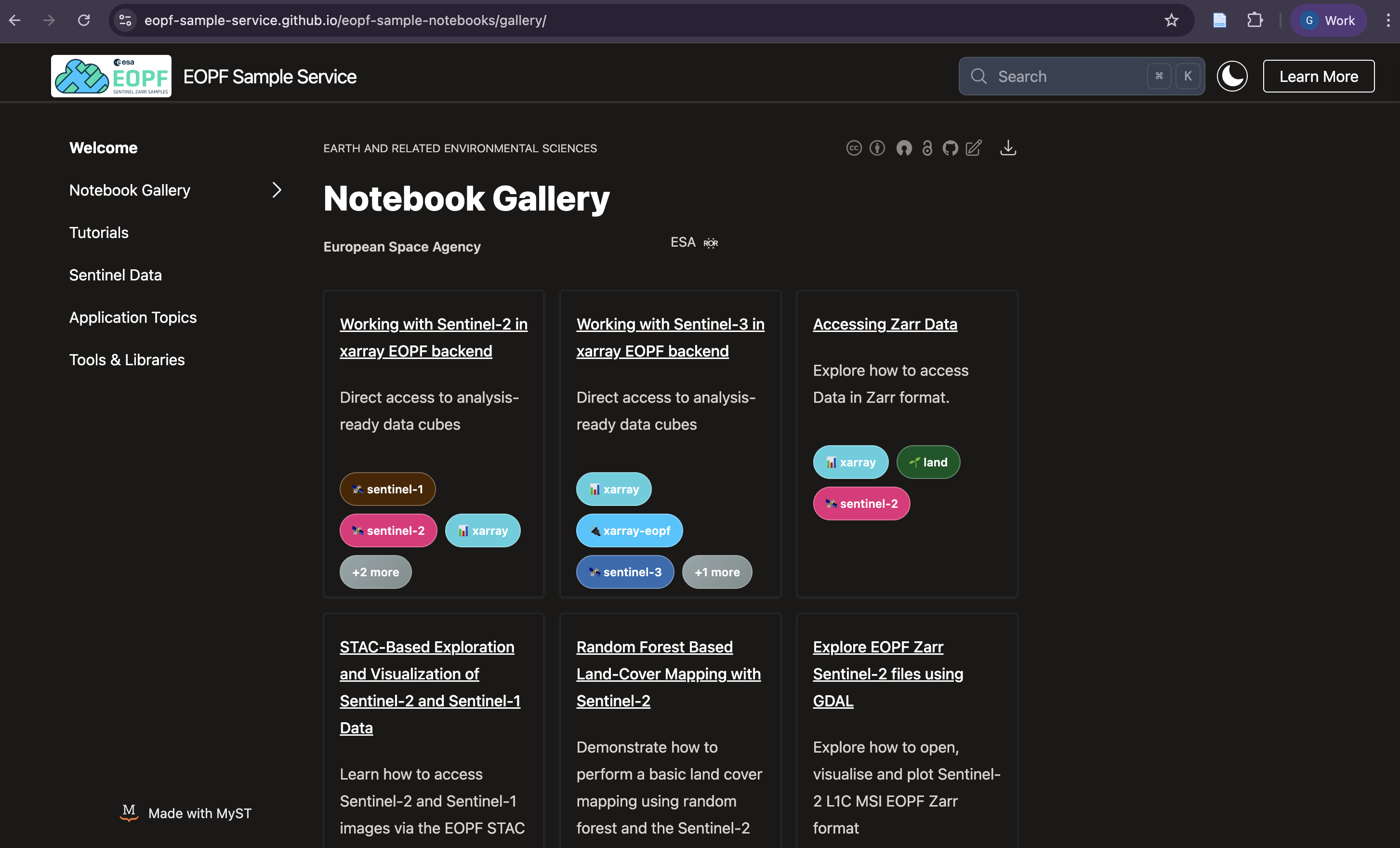The main aim of this tutorial was to introduce you to a faster and more efficient way of accessing Sentinel data. Rather than using traditional downloads, we demonstrated a direct-access, cloud-native approach.
What we will learned...¶
🔍 What STAC is and why it is a critical community standard.
🌳 How to navigate the STAC ecosystem.
🔦 How to explore and find data within the EOPF Sentinel Zarr Samples Service STAC Catalog.
Importance of Cloud Optimised Formats¶
Shifting to cloud-optimised formats such as zarr is essential for contemporary Earth Observation workflows as it significantly reduces latency and computational overhead when accessing data.
Leveraging this cloud-native data access enables us to achieve faster and easier response times for EO workflows, leading to quicker insights and more agile development cycles.
Missions Integration¶
Integrating data from multiple sources efficiently is key to accelerating our understanding of the current state of the Earth and enabling more comprehensive analysis.
The EOPF STAC Catalog and Data Access¶
For the EOPF initiative, the STAC structure is specifically applied to Sentinel data:
Adopting the SpatioTemporal Asset Catalog (STAC) standard enhances the replicability and reusability of data within specific workflows, fostering a more collaborative and standardised EO ecosystem.
The EOPF Zarr Plugins¶
The EOPF ecosystem provides four plugins that make it easy to access data across different programming languages and platforms:
xarray EOPF backend
xcube EOPF data store
GDAL EOPF driver
Julia EOPF reader
We encourage you to try them out and share your feedback by opening issues in the respective repositories.
💪 Now it is your turn¶
After this tutorial, we invite you to participate the EOPF Zarr Hackathon tomorrow. If you don’t find time, you can visit our resources:
EOPF 101¶
 Available: here
Available: here
EOPF Sentinel Zarr Samples Notebooks¶
 Available: here
Available: here
Challenge yourself with discovering deeper the zarr EOPF format!
Happy zarr Coding! :)